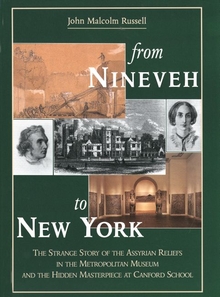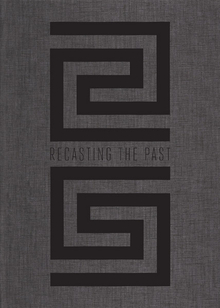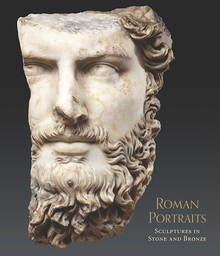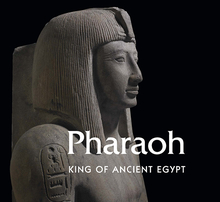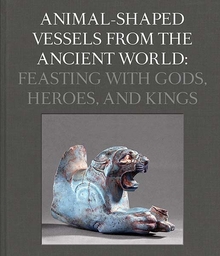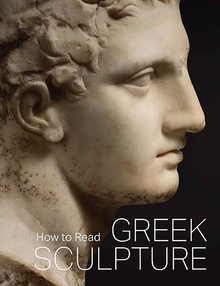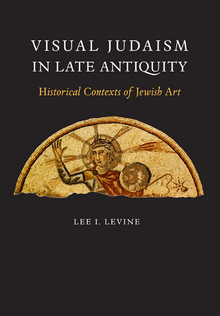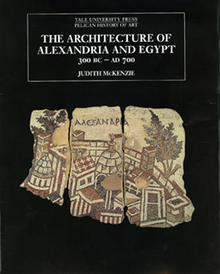From Nineveh to New York
WARNING
You are viewing an older version of the Yalebooks website. Please visit out new website with more updated information and a better user experience: https://www.yalebooks.com
The Strange Story of the Assyrian Reliefs in the Metropolitan Museum & the Hidden Masterpiece at Canford School
John Malcolm Russell; With contributions by Judith McKenzie and Stephanie Dalley
This book is based almost entirely on unpublished archives, including the 10,000-page diary of Lady Charlotte Guest, the brilliant and resourceful cousin of Layard's and the richest woman in England. At her country house, Canford Manor, Guest commissioned from Barry, architect of the Houses of Parliament, the "Nineveh Porch" to display the remarkable sculptures. This established a whole new decorative and architectural fashion for "Assyrian Revival." Russell explores the events that led to the creation of the Porch, casting vivid new light on the archaeological, cultural, and architectural politics of the day.
The dispersal of the collection after World War I, and the initial reluctance of any American museum to acquire the sculptures, form another story—entertainingly illuminated by the ingenious and ultimately successful scheme of the dealer Kelekian to sell them to John D. Rockefeller and others. Assyria's admission to the family of world art, and ethical questions surrounding the appropriation of antiquities, add another strand to the tale, culminating in Saddam Hussein's attempted intervention at the Christie's sale in 1994. With previously unpublished photographs, illustrations from rare nineteenth-century sources, and extensive passages from Guest's diary, this book provides an unprecedented look into the rich history and meaning of Assyrian art and of nineteenth- and twentieth-century taste, dealing, and collecting.
Published in association with The Metropolitan Museum of Art
A selection of the Natural Science Book Club
"Mr. Russell writes with unpretentious efficiency, seldom revealing his own opinion of the events he reports, which involve aesthetic theory, social wire-pulling, religious misinterpretation, and a number of interesting people-beginning with Lady Charlotte, who had a weakness for young men on the make. It is a truly remarkable story."—Atlantic Monthly
"Beautifully produced. . . . The perfect book: scholarly without being dry, informative without being stodgy, funny without being facetious, and good to look at without feeling too precious to handle. It is the ideal book for a long week-end. . . . I have seldom enjoyed a book as much as this."—Brian Brindley, Catholic Herald
"A true detective story about the wheelings and dealings of Metropolitan Museum art collectors and Victorians heiresses"—Jackie Wullschlager, Financial Times
"I haven't read a more thrilling book in years about archeology and the history of taste than John Malcolm Russell's story of the peregrinations of the spectacular Assyrian reliefs and colossi now at the Metropolitan Museum of Art. Or one more beautifully organized, scrupulously researched and laden with vivid human characterizations and penetrating observations about the fashions and foibles surrounding artistic styles."—Thomas Hoving, New York Times Book Review
"A meticulous account of the state of the sculpture in Sennacherib’s throne room, the fullest possible record of a magnificent cultural resource that has been lost forever."—A.R. George, Royal Asiatic Society
"Russell has done a splendid job in fitting the pieces of this complex story together. It is particularly admirable that he has been able to include all the accoutrements of good scholarship—footnotes, extended quotations, precise descriptions, and so on—while telling a readable and engrossing tale. The only mystery that remains is how such astonishing relics could ever have been seen as anything less than the magnificent legacy of one of the world's great civilizations."—John R. Alden, The Philadelphia Inquirer
Publication Date: May 29, 1997
Publishing Partner: Published in association with The Metropolitan Museum of Art
74 b/w + 43 color illus.

